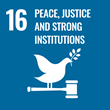
Project information
Continuity and Rupture in Central European Art and Architecture, 1918-1939 — CRAACE
(CRAACE)

- Project Identification
- 786314
- Project Period
- 4/2019 - 2/2024
- Investor / Pogramme / Project type
-
European Union
- Horizon 2020
- ERC (Excellent Science)
- MU Faculty or unit
-
Faculty of Arts
- Matthew Rampley, B.A., Ph.D.
- Mgr. Marta Filipová, Ph.D.
- Julia Secklehner, M.Phil., Ph.D.
- Nóra Veszprémi, Ph.D.
When new political elites and social structures emerge out of a historical rupture, how are art and architecture affected? In
1918 the political map of central Europe was redrawn as a result of the collapse of Austria-Hungary, marking a new era for
the region. Through comparative analysis of the visual arts in 3 states built on the ruins of the Habsburg Empire (Austria,
Hungary and [former] Czechoslovakia), this project examines how such political discontinuity affected art and architecture
between 1918 and 1939. The project is organised into 4 themes, each resulting in a monograph:
1. Vernacular modernisms, nostalgia and the avant-garde
2. Presenting the state: world fairs and exhibitionary cultures
3. Piety, reaction and renewal
4. Contested histories: monuments, memory and representations of the historical past
It is the first systematic and comprehensive trans-national study of this type, based on the claim that the successor states
to Austria-Hungary belonged to a common cultural space informed by the shared memory of the long years of Habsburg
society and culture. The project focuses on the contradictory ways that visual arts of artists and architects in central Europe
adapted to and tried to shape new socio-political circumstances in the light of the past. The project thus examines the long
shadow of the Habsburg Empire over the art and culture of the twentieth century.
The project also considers the impact of the political and ideological imperatives of the three successor states on the visual
arts; how did governments treat the past? Did they encourage a sense of historical caesura or look to the past for
legitimation? How did artists and architects respond to such new impulses? In answering these questions the project
analyses the conflicts between avant-gardes and more conservative artistic movements; the role of the visual arts in
interwar memory politics; the place of art in the nexus of religion, national and state identity.
Sustainable Development Goals
Masaryk University is committed to the UN Sustainable Development Goals, which aim to improve the conditions and quality of life on our planet by 2030.
Publications
Total number of publications: 188
2022
-
ARTWORK OF THE MONTH, JUNE 2022: NUMBERED POEM NO 18 BY LAJOS KASSÁK (1921)
Year: 2022, type: Popularization text
-
ARTWORK OF THE MONTH, MARCH 2022: THE PARADISE OF THE BLACKS BY TOYEN (1925)
Year: 2022, type: Popularization text
-
ARTWORK OF THE MONTH, MAY 2022: THE EARTH SINGS BY KAREL PLICKA (1933)
Year: 2022, type: Popularization text
-
ARTWORK OF THE MONTH, OCTOBER 2022: COVER OF MODERNE WELT BY CARRY HAUSER (1934)
Year: 2022, type: Popularization text
-
BEDŘICH FEUERSTEIN, ARCHITECT: PRAGUE – PARIS – TOKYO: EXHIBITION REVIEW
Year: 2022, type:
-
Beyond the Bauhaus A Review of: Beate Störtkuhl and Rafał Makała, eds, Not Just Bauhaus. Networks of Modernity in Central Europe, Oldenbourg: De Gruyter, 2020.
Year: 2022, type:
-
Beyond the Provincial : Entanglements of Regional Modernism in Interwar Central Europe
Periodization in the Art Historiographies of Central and Eastern Europe, year: 2022, number of pages: 16 s.
-
Blindspots of Austrian art history: Revisiting 1945 as 'point zero´
Year: 2022, type: Appeared in Conference without Proceedings
-
Creating Kitzbühel. Alfons Walde, Ski Tourism and the (Re)making of Austrian Identity
Year: 2022, type: Appeared in Conference without Proceedings
-
Crossing Borders and Period Boundaries in Central European Art : The Work of Anna Lesznai (ca. 1910–1930)
Rethinking Period Boundaries : New Approaches to Continuity and Discontinuity in Modern European History and Culture, year: 2022, number of pages: 30 s.




